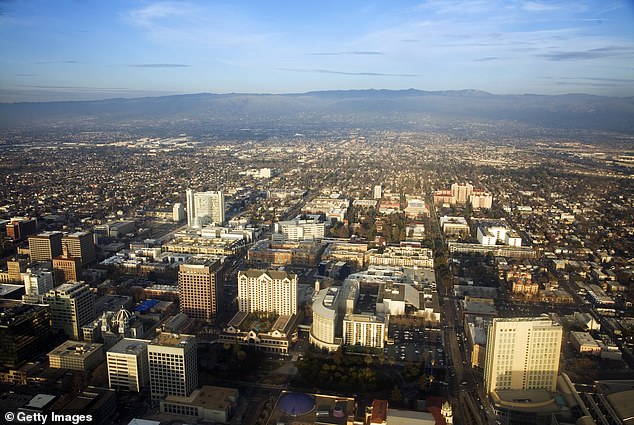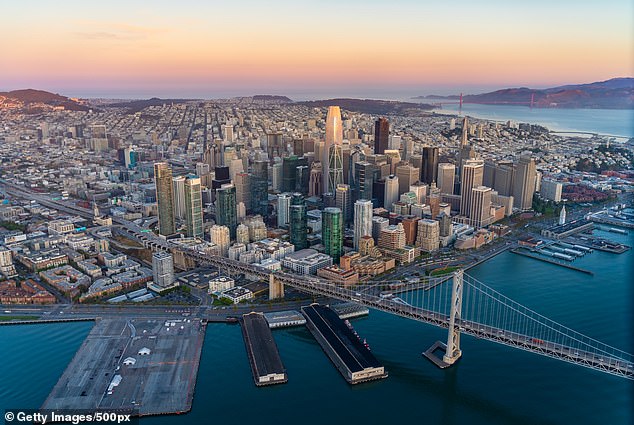America’s most expensive cities ARE worth the money: San Jose, Austin, and EVEN crime-ridden San Francisco offer best quality of life thanks to high wages, study shows
Despite being among the most expensive cities in the US, San Francisco and San Jose offer the best living standards for lower- and middle-income households.
The Bay Area’s high cost of living is more than offset by higher wages, making it the nation’s top-rated city for quality of life, according to an analysis by the Ludwig Institute for Shared Economic Prosperity (LISEP).
The findings are at odds with recent headlines labeling San Francisco as a “blighted city” and “hell” thanks to rising crime rates, homelessness and drug use.
The LISEP Local Analysis ranks the nation’s 50 largest metropolitan areas based on the economic well-being of their middle- and working-class residents.
The top ten cities for lower- and middle-income households included such well-known expensive places as San Jose, San Francisco and Washington DC

San Jose (pictured) ranks first in the LISEP ranking of metros with the highest living standards for middle- and lower-income households
Other metros in the top ten included Austin, Baltimore, Washington DC, Minneapolis, Portland, Milwaukee, Denver and Salt Lake City.
Meanwhile, a net loss in real wages and the skyrocketing cost of housing pushed Fresno, California, to the bottom of the list. Just above that were Las Vegas, Honolulu, Tulsa and Memphis.
New York City was also among the cities where middle- and working-class families fared the worst. However, according to the LISEP rankings, it did have a much higher number of high-earning jobs.
“The United States is not a single economy; it is an amalgamation of hundreds, even thousands, of regional economies,” said LISEP President Gene Ludwig.
“Understanding the dynamics of these economies and how they impact low- and middle-income populations is critical to responsible policymaking.”
The report also shows that the best-performing cities tend to have a more equal mix of jobs across the wage spectrum: low, middle and high.
And in cities near the bottom of the list, a higher share of total jobs tended to offer lower incomes. In Las Vegas, nearly 65 percent of jobs were lower-income.
In Memphis, nearly 67 percent of jobs were moderate-paying.

Fresno, Las Vegas (photo), Honolulu, Tulsa and Memphis were at the bottom of the rankings

The high cost of living in the Bay Area is more than offset by higher wages, according to the LISEP report. Pictured is an aerial view of San Francisco
The LISEP ranking was based on statistics that take into account the costs of basic goods and services such as housing, food and childcare.
It also looks at the extent to which these prices have risen over the past twenty years and compares the total cost of goods against local wages.
“Across the country we see both ends of the spectrum: communities where middle- and working-class families are doing well and others where financial survival remains a struggle,” Ludwig said.
But San Francisco and San Jose also appeared to have seen the most inflation since 2005.
In San Francisco, the average household with two adults and two children was left with 18 percent of their income after meeting basic needs. In San Jose, that number is 25 percent.
San Francisco’s prominence on the list is surprising given its growing reputation as a crime hotspot.
The city has struggled with rampant fentanyl use and fatal overdoses for years, and is on track for its deadliest year yet.
On October 29, San Francisco police reported that the city’s homicide rate increased 7 percent, theft rose 14.4 percent and motor vehicle theft increased 8.3 percent.
Economists also previously warned that the city is entering an ‘urban doom loop’ – a vicious circle of interconnected trends and forces that are plunging cities into economic and social ruin.
Over the past year, dozens of high-profile retailers announced they were leaving the city center.
Stout retailer Old Navy announced last month that it would close its flagship store in the area, becoming the latest chain to leave town.
